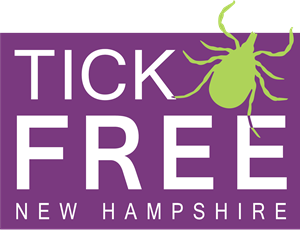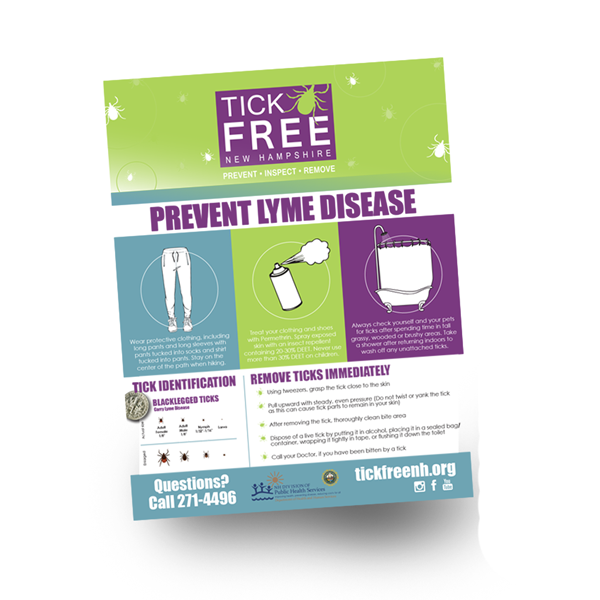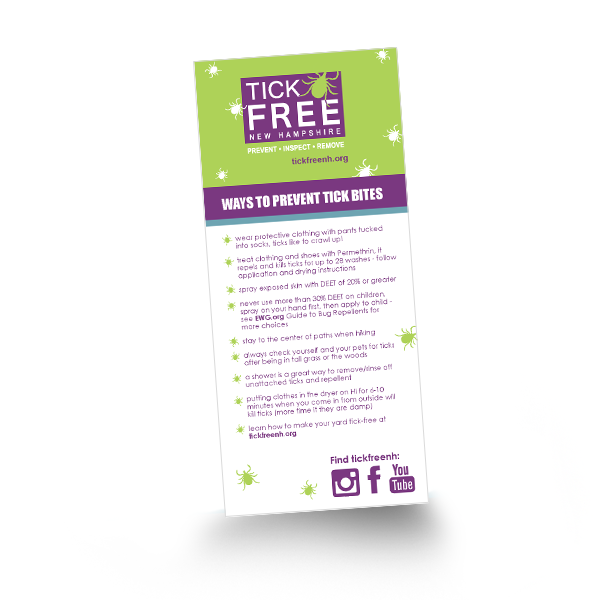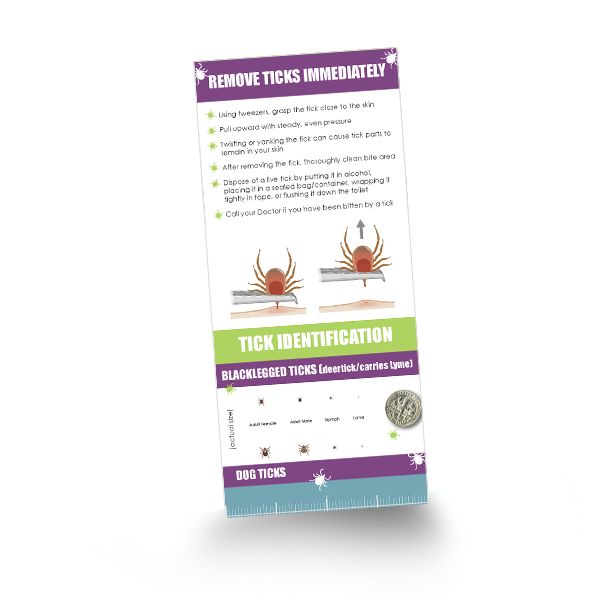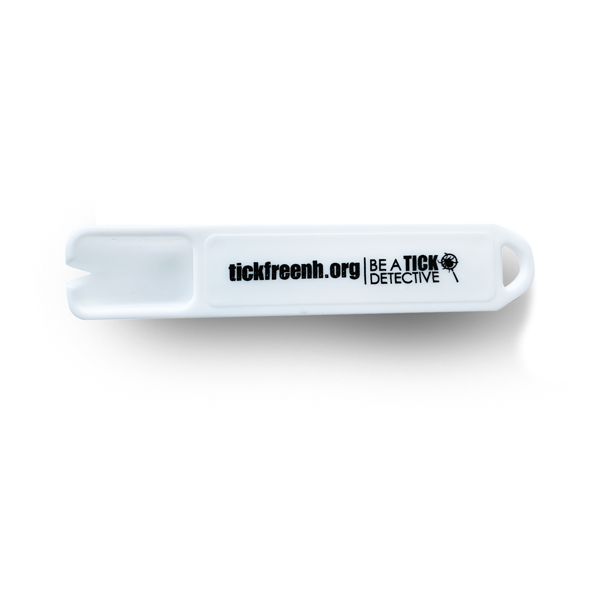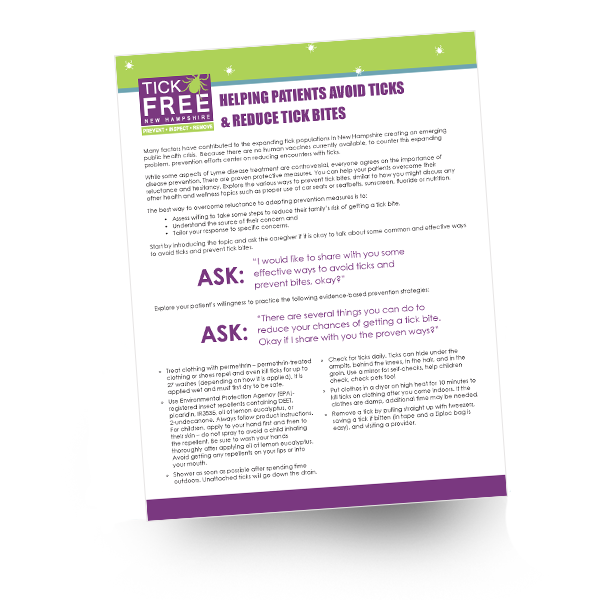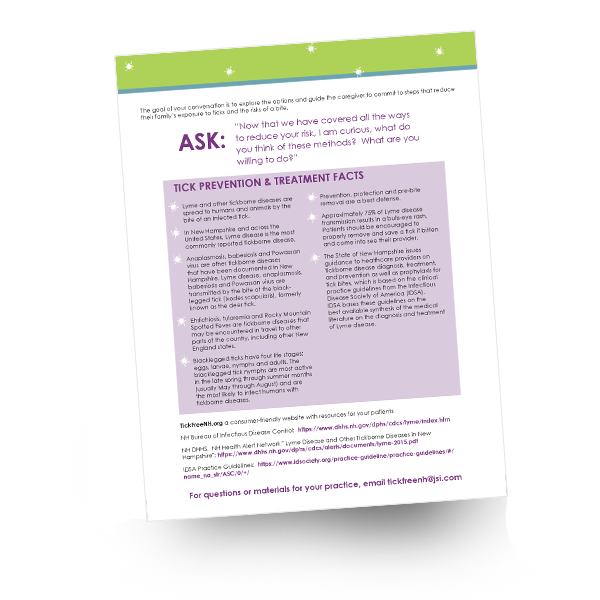Health Care Professionals
With one of the highest rates of Lyme disease in the country, New Hampshire has been impacted significantly by tickborne diseases. The incidence of Lyme disease in the United States has nearly doubled since 1991, on average, New Hampshire’s rate has increased by 87 additional cases per 100,000 000 people. Approximately 1,170 people in New Hampshire are newly diagnosed with Lyme disease annually. Yet according to our statewide survey responses about 40% of residents believe they are at a low or no risk of contracting Lyme disease.
The Tick Free NH Council and Tick Free NH are providing NH these practice and consumer tested resources, for use in your offices, on tick prevention to share with patients and clients and encourage protective behaviors against tickborne diseases.
In 2019 Tick Free NH surveyed health care professionals to ascertain current practices and level of need for educational materials on tickborne disease. These materials were created from what health care professionals identified as needed to increase and enhance the conversations they have with their patients around tickborne disease prevention. Please to take this short survey to share your feedback about the Tick Free NH Patient Education Materials.
Subscribe to Tick Free NH to receive quarterly updates on Health Care Practice Resources, timely tick information, and new product releases.
Receive quarterly updates on Health Care Practice Resources, timely tick information, and new product releases.
Get Involved
If you are an active or retired healthcare worker from any NH healthcare-related setting, including clinical and non-clinical ones, or are a student or trainee in any healthcare-related discipline in New Hampshire, please support NH Healthy Climate, a young grassroots and nonpartisan organization! As healthcare workers are uniquely positioned to increase public awareness of the links between health and climate change, NH Healthy Climate seeks to provide NH healthcare workers the tools to educate and mobilize the public in support of climate solutions to improve health for all, including reducing exposure to vector-borne diseases.
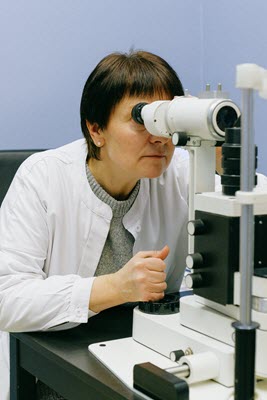
Join the Tick Free NH Council
The Tick Free NH Council is an advisory group that convenes quarterly to prioritize prevention activities and identify and leverage partnerships in tickborne disease prevention. Tick Free NH is a donor-funded project which provides education and resources at no-cost to all New Hampshire residents to help them protect themselves from tick encounters. Contact us for more information about the council and Subscribe to Tick Free NH to keep in touch and up-to-date.
Other Resources
The Centers for Disease Control and Prevention offer a TickBorne Diseases of the United States Reference Manual for Health Care Providers. The CDC also offers a set of online Tickborne Disease Continuing Education Modules that focus on treatment and testing.
Earn free Continuing Education credits from the CDC via a new, free CME, Tickborne Encephalitis Vaccine: Recommendations of the Advisory Committee on Immunization Practices, from MMWR and Medscape that discusses the latest ACIP recommendations for the tick-borne encephalitis vaccine.
The New Hampshire Division of Public Health Services released a Health Alert for health care professionals New Hampshire Tickborne Diseases (TBDs) Update, 2021.
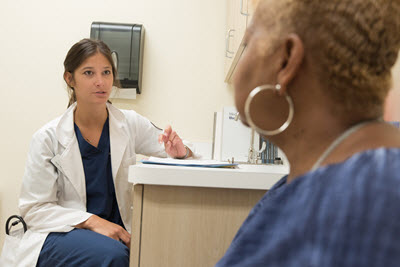
Commitment of national-level resources
Commit national-level resources in the areas of: disease and tick surveillance, biorepositories for specimens, and national databases, would accelerate recognition of new threats, development of new diagnostics and treatments, and identification of the pathogenesis of disease.
Development of a tickborne disease portfolio
Develop a tickborne disease portfolio in the Advanced Research Project Agency for Health (ARPA-H) and Biomedical Advanced Research and Development Authority (BARDA). This would likely improve coordination across agencies and accelerate progress toward improving patient care and address deficiencies identified in the tickborne disease diagnostics and therapeutics discovery pipelines.
Prioritize health equity for sufferers of tickborne diseases and associated illnesses. Recent advances in the care of at-risk patients include improved access to telemedicine in areas where health care providers lack expertise in tick-borne diseases and associated illnesses; better understanding of the clinical presentation of tick-borne diseases, particularly in populations that are commonly under-evaluated such as prisoners, individuals in psychiatric facilities, and migrant workers; establishment of safety standards for individuals in high-risk occupations; and labeling of food, medical, and commercial products to protect patients with Alpha-gal Syndrome.
Creation of targeted funding opportunities
Create targeted funding opportunities in understudied areas, including: development of tick control and preventive agents against tick bites; improved diagnostics for multiple diseases; vaccines; treatments for tickborne viruses and persistent symptoms of Lyme disease; and additional studies of central nervous system and psychiatric manifestations of tickborne illnesses, effects on pregnancy, and development of post-tick bite allergies to alpha galactosidase.
Health Equity
“Health disparities—that is, differences in access to care, longevity, rates of disease, disease severity, disability, quality of life, and death —are the result of structural and societal determinants of health inequity. Although health inequities are often associated with race, ethnicity, or sexual orientation, they also arise in the context of specific marginalized or stigmatized medical conditions such as mental health conditions, HIV/AIDS, substance use disorders, sexually transmitted infections, and tick-borne diseases and associated illnesses.” (Tick-Borne Disease Working Group 2022 Report to Congress, 2022.)
